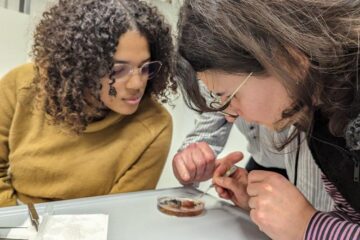Protein delivers selenium for normal sperm development

A paper to be published in the journal Biology of Reproduction offers evidence that a protein circulating in the blood of mammals delivers the dietary micronutrient selenium to germ cells, enabling these cells to develop into normal sperm.
Previously, the function of this protein, selenoprotein P, was unknown, although it was believed to play a role as an antioxidant and to transport selenium throughout the body.
Dietary selenium is essential for normal sperm development and male fertility. Selenoprotein P, or SEPP1, carries about 60 percent of the selenium in blood plasma.
To understand the physiological function of SEPP1 in the testes and epididymis of mammals, a team of scientists at Vanderbilt University in Nashville studied male mice that lack the gene to produce SEPP1. These genetically altered males have levels of selenium in the testis that are less than 10 percent of those in control mice, and they are generally infertile.
The research team, headed by Dr. Gary E. Olson, found that the mutant male mice lacking SEPP1 develop sperm with defective tails, similar to the sperm produced by unaltered male mice fed a low-selenium diet.
Furthermore, the mutant mice do not recover normal sperm production after prolonged feeding on a diet supplemented with high levels of selenium, and they remain infertile. Thus, even selenium supplements could not overcome the need for SEPP1 to facilitate normal sperm development.
These findings, according to Olson and colleagues, strongly indicate that SEPP1 is the source of the selenium needed for development of normal sperm and for male mice to maintain their fertility.
Media Contact
More Information:
http://www.vanderbilt.eduAll latest news from the category: Life Sciences and Chemistry
Articles and reports from the Life Sciences and chemistry area deal with applied and basic research into modern biology, chemistry and human medicine.
Valuable information can be found on a range of life sciences fields including bacteriology, biochemistry, bionics, bioinformatics, biophysics, biotechnology, genetics, geobotany, human biology, marine biology, microbiology, molecular biology, cellular biology, zoology, bioinorganic chemistry, microchemistry and environmental chemistry.
Newest articles

A new look at the consequences of light pollution
GAME 2024 begins its experiments in eight countries. Can artificial light at night harm marine algae and impair their important functions for coastal ecosystems? This year’s project of the training…

Silicon Carbide Innovation Alliance to drive industrial-scale semiconductor work
Known for its ability to withstand extreme environments and high voltages, silicon carbide (SiC) is a semiconducting material made up of silicon and carbon atoms arranged into crystals that is…

New SPECT/CT technique shows impressive biomarker identification
…offers increased access for prostate cancer patients. A novel SPECT/CT acquisition method can accurately detect radiopharmaceutical biodistribution in a convenient manner for prostate cancer patients, opening the door for more…





















